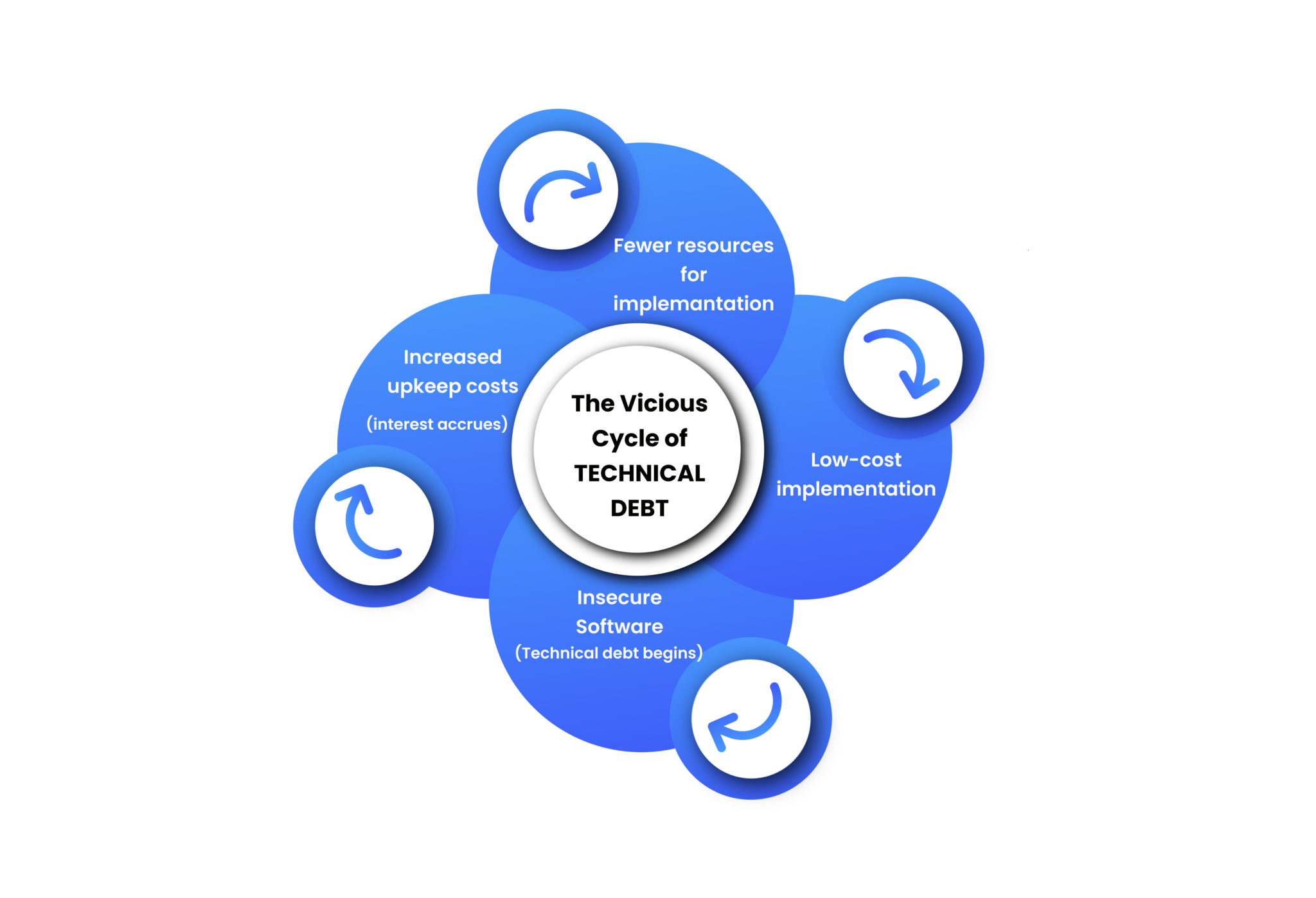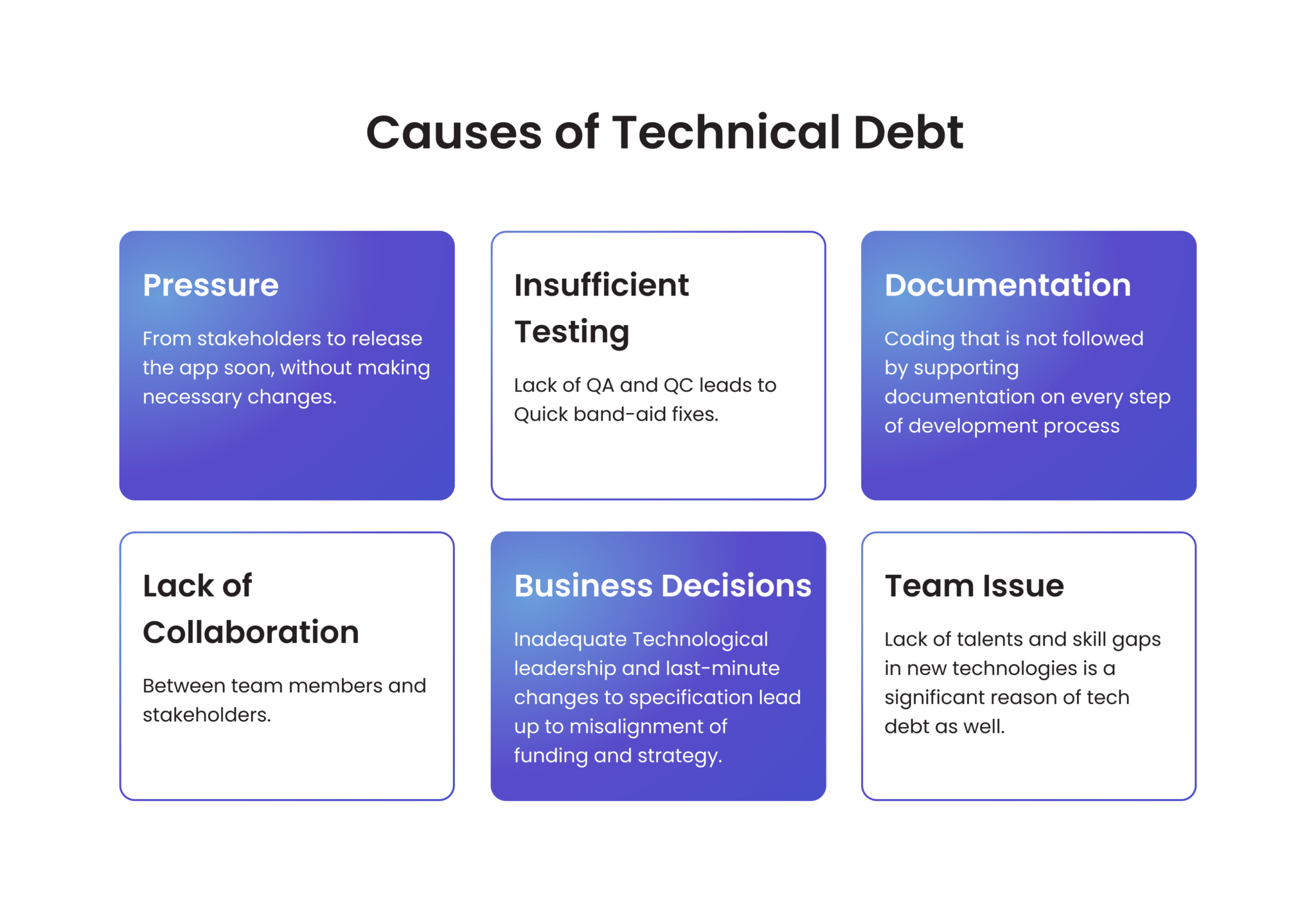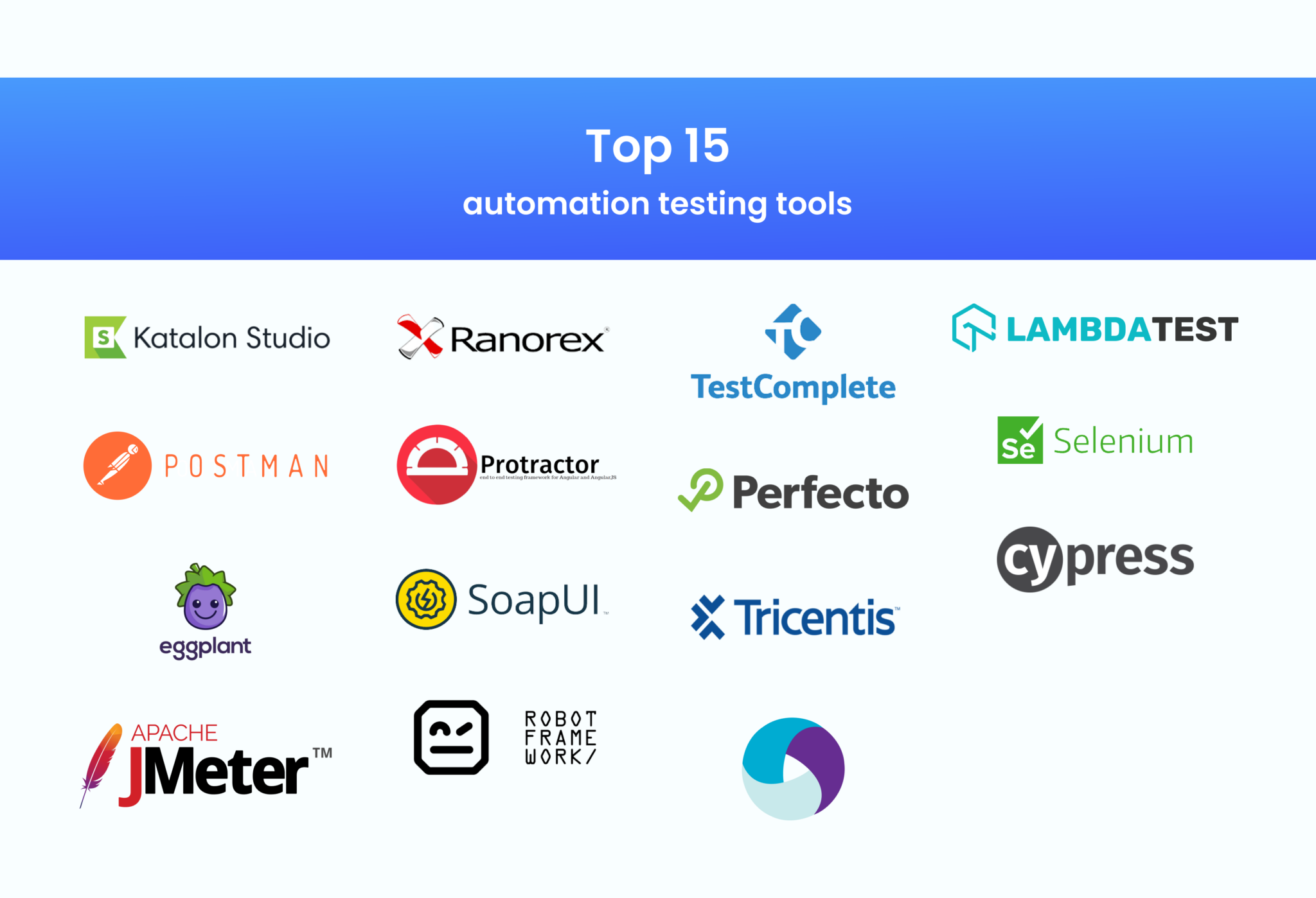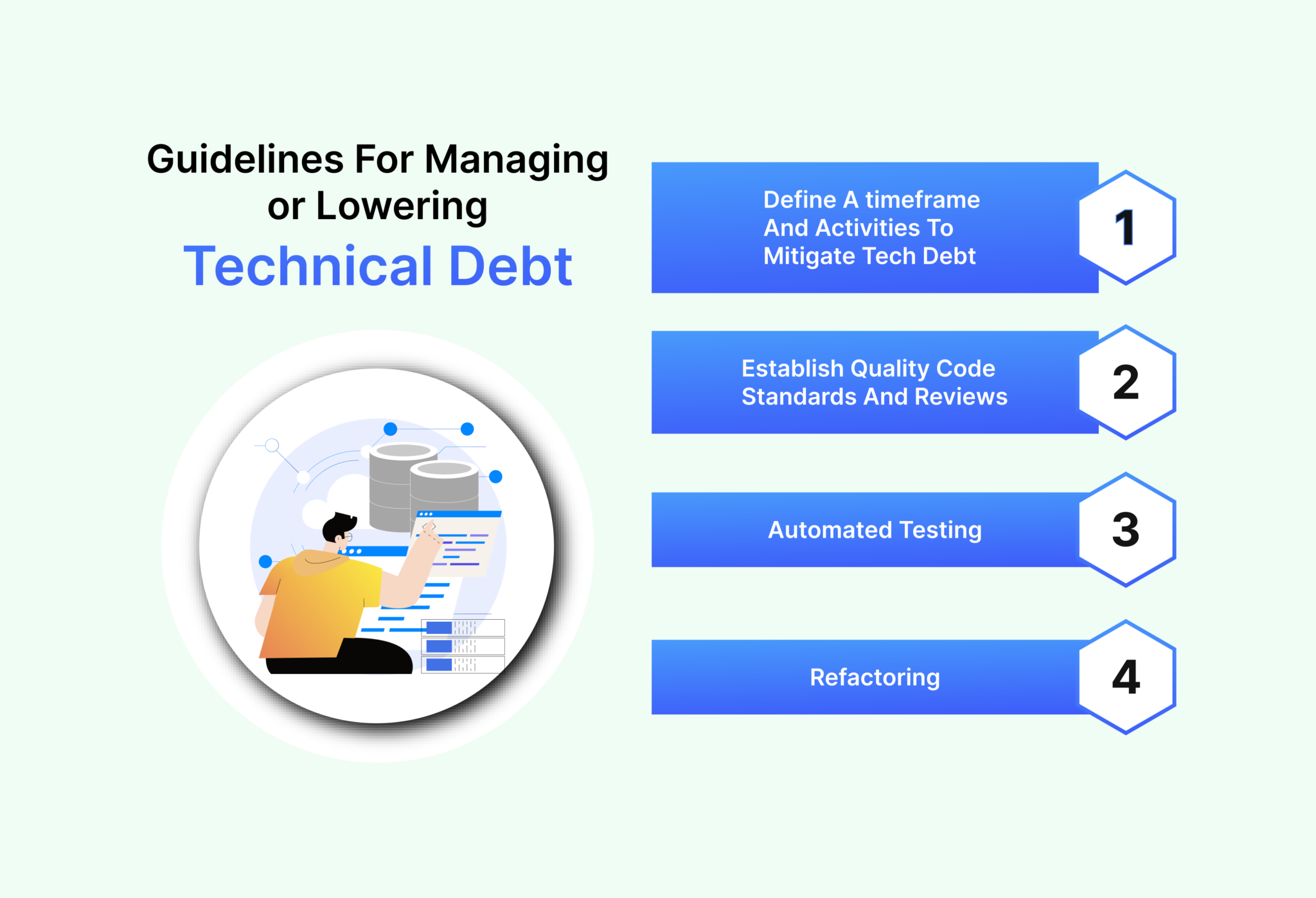Technical debt is a huge issue that can negatively affect the quality of a system. Although developers and project managers are the main users of technical debt, in this article we’ll look at how quality assurance (QA) testers deal with it. Scroll through to find out what technical debt is, why the QA team should be concerned about it, and, most importantly, how to properly handle it.
What is technical debt?
First of all, let’s discuss what exactly is technical debt. Technical debt, also known as tech debt or code debt, is a metaphorical idea. It argues that, like debt concerns in finance, software organizations face something similar in the accumulation of unfinished work from previous projects and version releases.

It indicates the effort required to resolve issues or defects that remain in the code after a program has been released. In a nutshell, it is the difference (in terms of bugs) between what is expected and what is delivered. Technical debt has become an important part of the software development lexicon and is widely recognized as a crucial aspect that can affect a software product’s long-term performance.
Ward Cunningham, the pioneer of wiki software, came up with this concept in the 1990s, drawing comparisons with the impact of bad debt on the banking system, literally pointing to the awful experience of having to pay excessive interest money after defaulting on loans. It should be noted, however, that the notion of technical debt (also known as code debt or design debt) differs slightly from its corresponding analogy in the financial industry; the former is more like an abstract concept with no mathematical calculations to show how the interest actually accumulates.
Why is it important to manage technical debt?
It’s not uncommon that while fixing bugs on a project, unfortunately, many new bugs appear. Most development teams hurriedly working on projects have encountered this issue. Out of these issues, some are fixed quickly and some differ for later release. While many teams choose the “create now, correct later” strategy, this can make things more complicated in the long term.
When the number of issues increases, it becomes almost impossible to release the product on schedule and without issues. If technical debt is not addressed on time, this is the worst outcome.
Technical debt can have a damaging effect on a system’s quality and reliability. If a system has a high level of technical debt, it may be more prone to mistakes and flaws, which can cause serious issues for the user experience and overall system performance.
When do QA teams encounter technical debt?
Several factors can contribute to a “technical debt” situation during a typical software design and development cycle, including:
- Inadequate documentation
- Insufficient testing and bug fixing
- Lack of coordination between teams
- Delayed refactoring
- Legacy code
- Lack of continuous integration
- Other uncontrollable factors

You and your team must have experienced this issue too. How many times have your testers been caught off guard at the last minute when the delivery manager abruptly appeared and said, “Guys, we need to launch our product in a week, and we are very sorry for not communicating this sooner? Please complete all test tasks ASAP so that we can begin the demo.” Simply put, any missing tests or “fix it later” attitude can result in a tech debt problem. Lack of test coverage, excessive user stories, short sprints, and other forms of “cutting corners” due to time constraints all contribute significantly to the building of technical debt in QA practice.
An Example of Technical Debt
When the complexity of the testing mesh began to grow with each new sprint, a US-based online retailer with a strong presence across various websites and mobile apps found itself in a real-world “technical debt” dilemma.
This resulted from an unexpected increase in the number of mobile devices to test, languages to support, and social networking sites to use.
Impact of Tech Debt
With less than 40% automation coverage, the tech debt concern would arise in the following ways:
- Excessive time spent on release testing: As the number of browsers, devices, and scripts increased with each test sprint, the release cycle became increasingly delayed, resulting in a loss of time-to-market.
- Hiring costs are rising. The number of testers required to support the project nearly doubled, resulting in additional costs.
- Project complexity: As the project grew in complexity, keeping track of test cases and defects became difficult.
- Too much effort is wasted pursuing false positives, another result of increased project complexity.
- An increase in test development efforts by as much as 60% goes with the territory.

Tech Debt Management in QA Practices
Most QA managers mistakenly believe that tech debt is a legitimate result of putting all of your work on the current sprint alone, which leads to completing test coverage manually and completely ignoring automation.
According to agile principles, we should see the tech debt problem as an inability to maintain and meet QA benchmarks.
According to a National Institute of Standards and Technology (NIST) survey, insufficient testing tools and procedures cost the U.S. economy between $22.2 and $59.5 billion per year, with around half of this money spent on further testing by software developers and the other half spent by software users to avoid failures.
A proactive strategy
Rather than reacting to failures as they occur, a proactive strategy would be to detect faults after every operation or action that can be monitored. You can do it all manually, but with thousands of test case scenarios in a typical project, automated testing control is required.
Comprehensive testing
Clearly, good testing may help you make significant progress against technical debt. So, what exactly does that mean? This demonstrates how capable your system is of detecting flaws in the whole application.
It is worth noting that test case effectiveness can theoretically reach 100% if the number of customer-discovered defects (i.e., post-production defects) is accurately mapped to the number of problems discovered at each step of testing coverage.
Test automation
Automation is required to have a well-designed testing bed that can correctly measure errors as soon as they appear. Testing automation reduces the number of scripts run by reporting results and comparing them to previous test runs. A test automation framework is the method or procedure used to execute automation.
Some classic examples include commercial off-the-shelf (COTS) or free tools such as Selenium, MonkeyTalk, Robotium, Borland SilkCentral, HP Quality Center, and IBM Rational Rose.

Dedicated attention
Earlier,organizations and their software teams saw QA and testing as just one of the support activities for more important business deliverables. Until quite recently, they didn’t recognize it as a disciplined procedure in its own right that would demand dedicated attention. In fact, it is a non-core approach to QA/testing that has contributed to the recurring problem of technical debt in the first place.
Given the rapid evolution of QA and testing abilities over the past decade, organizations are having a difficult time upgrading their skills and competencies to the minimum levels required by current industry norms.
Hire pros
Also, there is an industry tendency to hire only the most experienced testing automation professionals, sort of like the elite commandos of testing and QA; they are known as:
- Software engineers in test (SEiT)
- Software developers in test (SDiT)
These experts are in greater demand now than ever due to their extensive knowledge in a specific sector (e.g., e-commerce) or professional category.
However, it’s not easy to have the skilled technical resources needed in the face of shorter delivery dates. This is the case faced by most software and product development firms. So what can you do? The solution to this problem is to collaborate with an offshore QA automation player that can handle your skills shortage with the appropriate pool of SDiT and SEiT resources.
Other good attributes of an outsourcing player in QA/Testing
- An agile, disciplined project execution style,
- Appropriate industry expertise, including hands-on access to reusable automation frameworks and test cases
- A clear aim and ability to address remote team difficulties and cultural incompatibilities so that the client is not burdened with extra effort in managing contractors

Wrapping up
In this post, we discussed all about technical debt. As you now know, it is critical to keep track of technical debt and work to eliminate it. Do not ignore the growing number of tech debt tickets in the backlog. This is a problem for the entire team and the product being built, not just the developers.
You must learn how to manage your debts. Technical debt, like any other type of debt, can be a nightmare for businesses, and the main reason for its accumulation is a failure to execute a proactive QA process that eliminates any backlogs in automation. It is critical to guarantee that the goods you are evaluating are of high quality and defect-free, and eliminating technical debt can assist you in accomplishing this aim.

